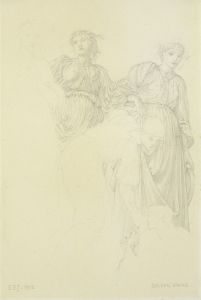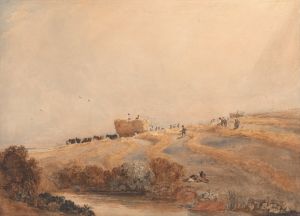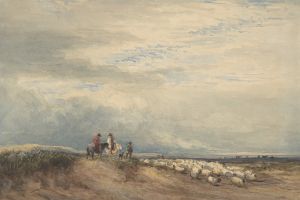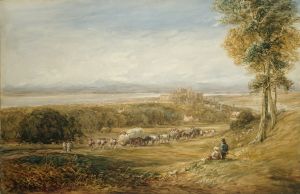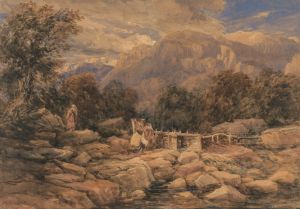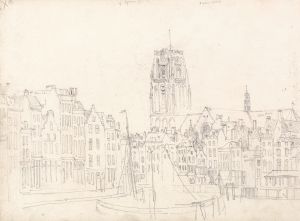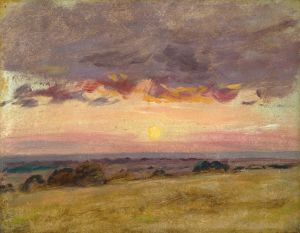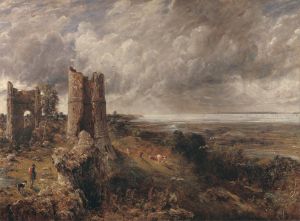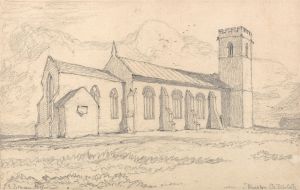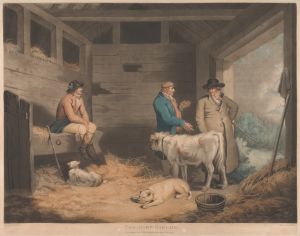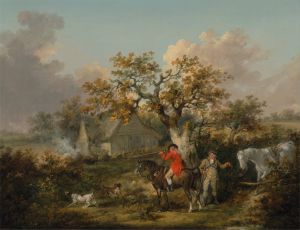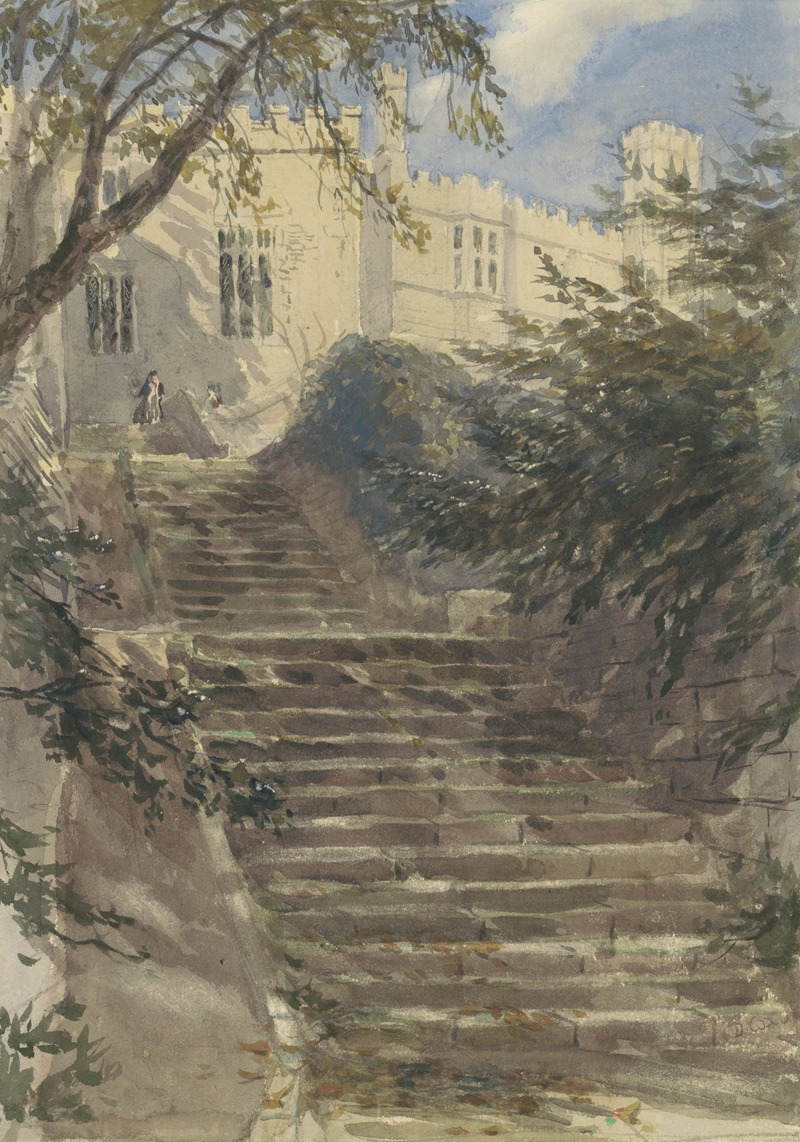
Tuintrap bij Haddon Hall
A hand-painted replica of David Cox’s masterpiece Tuintrap bij Haddon Hall, meticulously crafted by professional artists to capture the true essence of the original. Each piece is created with museum-quality canvas and rare mineral pigments, carefully painted by experienced artists with delicate brushstrokes and rich, layered colors to perfectly recreate the texture of the original artwork. Unlike machine-printed reproductions, this hand-painted version brings the painting to life, infused with the artist’s emotions and skill in every stroke. Whether for personal collection or home decoration, it instantly elevates the artistic atmosphere of any space.
David Cox (1783–1859) was a prominent English landscape painter, known for his contributions to the development of watercolor painting during the 19th century. One of his notable works is "Tuintrap bij Haddon Hall," which translates to "Garden Steps at Haddon Hall." This painting exemplifies Cox's mastery in capturing the essence of the English countryside and his skillful use of light and color.
Haddon Hall, located in Derbyshire, England, is a medieval manor house with a rich history dating back to the 11th century. It is renowned for its well-preserved architecture and beautiful gardens, which have inspired many artists over the years. Cox's painting focuses on the garden steps, a feature that highlights the harmonious blend of nature and architecture that characterizes Haddon Hall.
In "Tuintrap bij Haddon Hall," Cox employs his characteristic loose brushwork and subtle color palette to convey the tranquil atmosphere of the scene. The painting captures the play of light and shadow on the stone steps and surrounding foliage, creating a sense of depth and movement. This approach reflects Cox's interest in the effects of light and weather on the landscape, a theme that recurs throughout his body of work.
Cox was part of the Birmingham School of artists and was heavily influenced by the picturesque movement, which emphasized the beauty of natural landscapes. His work often depicted rural scenes, capturing the changing moods of the English countryside. "Tuintrap bij Haddon Hall" is a testament to his ability to depict the serene beauty of such settings, inviting viewers to appreciate the quiet elegance of the garden steps.
Throughout his career, Cox was known for his innovative techniques in watercolor painting. He often used a combination of wet and dry brushwork, as well as scratching out techniques to create texture and detail. These methods are evident in "Tuintrap bij Haddon Hall," where the textures of the stone and foliage are rendered with remarkable delicacy and precision.
Cox's influence extended beyond his own work; he was also a respected teacher and mentor to many young artists. His contributions to the art of watercolor painting were significant, helping to elevate the medium to new heights during the 19th century. His works, including "Tuintrap bij Haddon Hall," continue to be celebrated for their technical skill and evocative portrayal of the natural world.
Today, David Cox's paintings are held in high regard and can be found in major art collections, including the British Museum and the Victoria and Albert Museum. "Tuintrap bij Haddon Hall" remains an enduring example of his talent and his ability to capture the timeless beauty of the English landscape.





